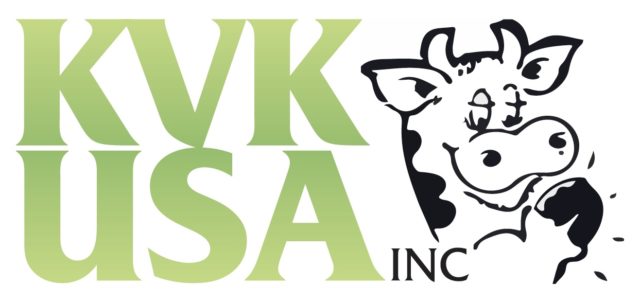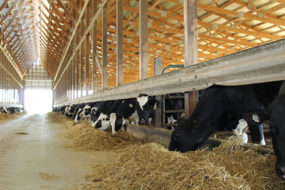Most individuals who work with large domesticated livestock will encounter situations where an animal is unlikely to respond favorably to treatment. The likelihood of treatment failure, the potential for animal suffering and the presence of drug residues are considerations that can make euthanasia of an animal the best available option. This [article] is designed to aid producers, livestock market operators, animal transporters and veterinarians in making the appropriate decisions regarding euthanasia of cattle.
Individuals who work with livestock should read this [article], discuss euthanasia options with a veterinarian and determine an action plan for livestock encountered in these situations. This action plan should be reviewed annually.
Euthanasia requires that the animal be rendered unconscious without distress or suffering prior to cessation of vital life functions. There are three physiological mechanisms for inducing euthanasia in cattle. Although several techniques exist for inducing euthanasia, all techniques will fall into one of the following categories:
•physical disruption of brain activity caused by direct destruction of brain tissue (gunshot, penetrating captive bolt)
•drugs that directly depress the central nervous system (anesthetics, barbiturates) and induce death by hypoxia
•agents that induce unconsciousness followed by mechanisms that induce hypoxia (narcotics followed by exsanguination)
Some indications for euthanasia
•fractured leg (irreparable); severe trauma
•loss of production and quality of life (severe mastitis, etc.)
•inability to stand or walk (disabled livestock)
•diagnostic (e.g., potential for human disease, such as rabies)
•advanced ocular neoplasia (cancer eye)
•debilitating or toxic condition
•cost of treatment prohibitive and poor prognosis
•extended withdrawal time for sale of meat and poor prognosis
Decision making
Actions involving debilitated, disabled or injured cattle may fall into the following categories: treatment, slaughter and euthanasia. Criteria to be considered in decision making should include:
1. pain and distress of the animal
2. likelihood of recovery
3. ability to get to feed and water
4. medications used on the animal
5. drug withdrawal time
6. economics
7. condemnation potential
8. diagnostic information
Considerations
When euthanasia is the most appropriate option, the following considerations must be made when choosing a method:
1. Human safety
The first consideration in the choice of euthanasia method is human safety. Obviously, the use of a firearm carries some danger. Some methods, such as a barbiturate overdose, usually result in a calm animal being euthanized quietly and easily.
2. Animal welfare
Any euthanasia method utilized should produce a quick and painless death. However, certain environments and animal behaviors may prevent the use of a more desired technique. Use the technique that is safest for humans and animals alike.
3. Restraint
Availability of cattle chutes or other forms of restraint may make certain forms of euthanasia more practical than others. For example, it may not be possible to euthanize an adult cow using barbiturates without proper head restraint. Several methods, such as use of the captive bolt or gunshot, necessitate appropriate restraint capabilities and training. In all cases, firm but gentle restraint should be exercised.
4. Practicality
An appropriate euthanasia technique must also be practical to use. Not all individuals working with cattle have legal access to drugs, such as barbiturates. Barbiturates require a federal license to store and use.
5. Skill
Some techniques, such as use of the captive bolt, require some skill and training to accomplish correctly. Designated individuals should be appropriately trained in proper euthanasia techniques wherever cattle are kept.
6. Cost
Some euthanasia techniques are more costly than others. However, other techniques (such as gunshot or captive bolt) require a larger initial investment, but continued use is very inexpensive.
7. Aesthetics
Certain euthanasia techniques, such as use of a barbiturate overdose, may appear more pleasing to the untrained eye than other techniques. Many techniques result in significant involuntary movements of the animal which may be misinterpreted as a voluntary painful response to those inexperienced in bovine euthanasia. Trained individuals should know how the animal responds to different euthanasia techniques.
8. Diagnostics
When tissues from a euthanized animal are to be sent to a laboratory for testing, the euthanasia method may be critical (such as avoiding damage to brain tissue in cases with rabies potential).
Methods
1. Gunshot
The firearm should be held 2 to 10 inches from the intended point of impact, and the bullet should be directed perpendicular to the front of the skull to prevent ricochet. The point of entry should be at the intersection of two imaginary lines, each drawn from the inside corner of the eye to the base of the opposite horn (slightly above the ear in polled animals).
A .22-caliber long rifle bullet is sufficient for most animals, but a .22-caliber Magnum or 9 mm round should be used on bulls. Use of a hollow-point or soft-nose bullet increases tissue destruction.
If performed skillfully, gunshot induces instantaneous unconsciousness, is inexpensive and does not require close contact with the animal. This method should only be attempted by individuals trained in the use of firearms and who understand the potential for ricochet. Care must be taken to minimize danger to the operator, bystanders and to other animals. In addition, since some cities have laws prohibiting the discharge of firearms in certain areas, the operator should be aware of local ordinances that may apply.
2. Captive bolt
Captive bolt guns are either penetrating or nonpenetrating. Penetrating captive bolt guns are meant to produce immediate brain tissue destruction. Both types (penetrating and nonpenetrating) will consistently cause stunning of an animal. A stunned animal will drop but will still exhibit respiration and sudden quick limb movements. An additional procedure (exsanguination, chemical agents) must be used to insure death after the use of the nonpenetrating captive bolt and is recommended after use of the penetrating captive bolt.
The captive bolt gun must be placed firmly against the skull at the same entry point previously described for a gunshot. Since use of the captive bolt gun requires close proximity to the animal, and good restraint, prior sedation or tranquilization may be required. Operator safety must be considered in the use of this technique.
Maintenance and cleaning of the captive bolt gun as described by the manufacturer must be followed exactly. In addition, selection of cartridge strength may vary among manufacturers and the appropriate strength for the size of the animal must be used.
3. Barbiturate
When properly administered by the intravenous route, barbiturate overdose (60 to 80 milligrams per kilogram sodium pentobarbitol IV) produces rapid unconsciousness and anesthesia followed by respiratory depression, hypoxia and cardiac arrest. The barbiturate selected should be potent, long-acting and stable in solution. Tissue residues of the barbiturate can be high. Care should be exercised to limit access of scavengers to the carcass.
4. Exsanguination
This method can be used to ensure death subsequent to stunning, anesthesia or unconsciousness. It must not be used as the sole method for euthanasia.
There are several methods for exsanguination. The most common method in the bovine is to lacerate one or both carotid arteries. A 6-inch long, sharp knife is fully inserted behind the point of jaw, just below the neck bones, and directed downwards until blood is freely flowing. Brachial vasculature can be lacerated by lifting a forelimb, inserting the knife deeply at the point of the elbow and cutting skin and vasculature until the limb can be laid back against the thorax of the animal. The aorta can be transected via the rectum, by a trained individual, so that blood pools within the abdominal cavity.
5. Electrocution
This method should only be attempted using specialized slaughter plant equipment that applies a minimum of 2.5 amp across the brain. A 120-volt electrical cord does not apply sufficient amperage to induce unconsciousness.
Electrocution does involve current as well as violent involuntary reactions by the animals. Therefore, this method does involve some danger to the operator.
Methods of bovine euthanasia are summarized in Figure 1*.
Confirmation of death
Confirmation of death is absolutely critical regardless of what method of euthanasia is chosen. Keep personal safety in mind when confirming death because animals can make sudden involuntary limb movements.
The following can be used to evaluate consciousness:
•lack of a heartbeat
•lack of respiration
•lack of corneal reflex
The presence of a heartbeat can be best evaluated with a stethoscope placed under the left elbow. Movement of the chest indicates respiration. (Note: breathing can be very slow and erratic in unconscious animals.) The corneal reflex can be tested by touching the eyeball and noting whether the animal blinks. A lack of heartbeat and respiration for more than five minutes should be used to confirm death.
Euthanasia of calves and bulls
Calves and bulls require special consideration in selecting the proper method of euthanasia. Ethical considerations do not change for the calf because it is small or more easily handled. Calves can easily be euthanized with a penetrating captive bolt gun. Barbiturate overdosing also works well, but legal restrictions must be followed.
Bulls require special considerations because of their size, attitude and physical thickness of their skull. Operator safety is of primary concern in euthanasia of bulls, and for certain techniques, proper restraint is critical. Bulls may be euthanized with specialized heavy duty captive bolt guns, firearms using a 9 mm shot or by barbiturate overdose.
Unacceptable methods of bovine euthanasia
Ethical and humane standards of euthanasia do not permit the following methods of euthanasia in the bovine:
1. manually applied blunt trauma to the head
2. injection of chemical agents into conscious animals (e.g., disinfectants, electrolytes such as KCl and MgSO4, nonanesthetic pharmaceutical agents)
3. air embolism (e.g., injection of large amount of air into the vasculature)
4. electrocution with a 120-volt electrical cord
Conclusions
Personnel at sites that routinely handle animals should at all times have the ability and facilities to carry out emergency euthanasia. Penetrating captive bolt and gunshot are the only two methods available to nonveterinarians for emergency euthanasia. Animal transporters should also be trained and have phone numbers to contact appropriate personnel in case of an emergency.
Market and sale yards should have a written procedure to follow in case of emergency and should have personnel trained in emergency euthanasia during all shifts. When practical, choose a location where the carcass can be easily reached by removal equipment. An action plan for routine and emergency euthanasia should be developed and followed wherever animals are handled. PD
References omitted due to space but are available upon request.
Figure omitted but is available upon request to editor@progressivedairy.com.
—From Animal Welfare Committee of the American Association of Bovine Practitioners





